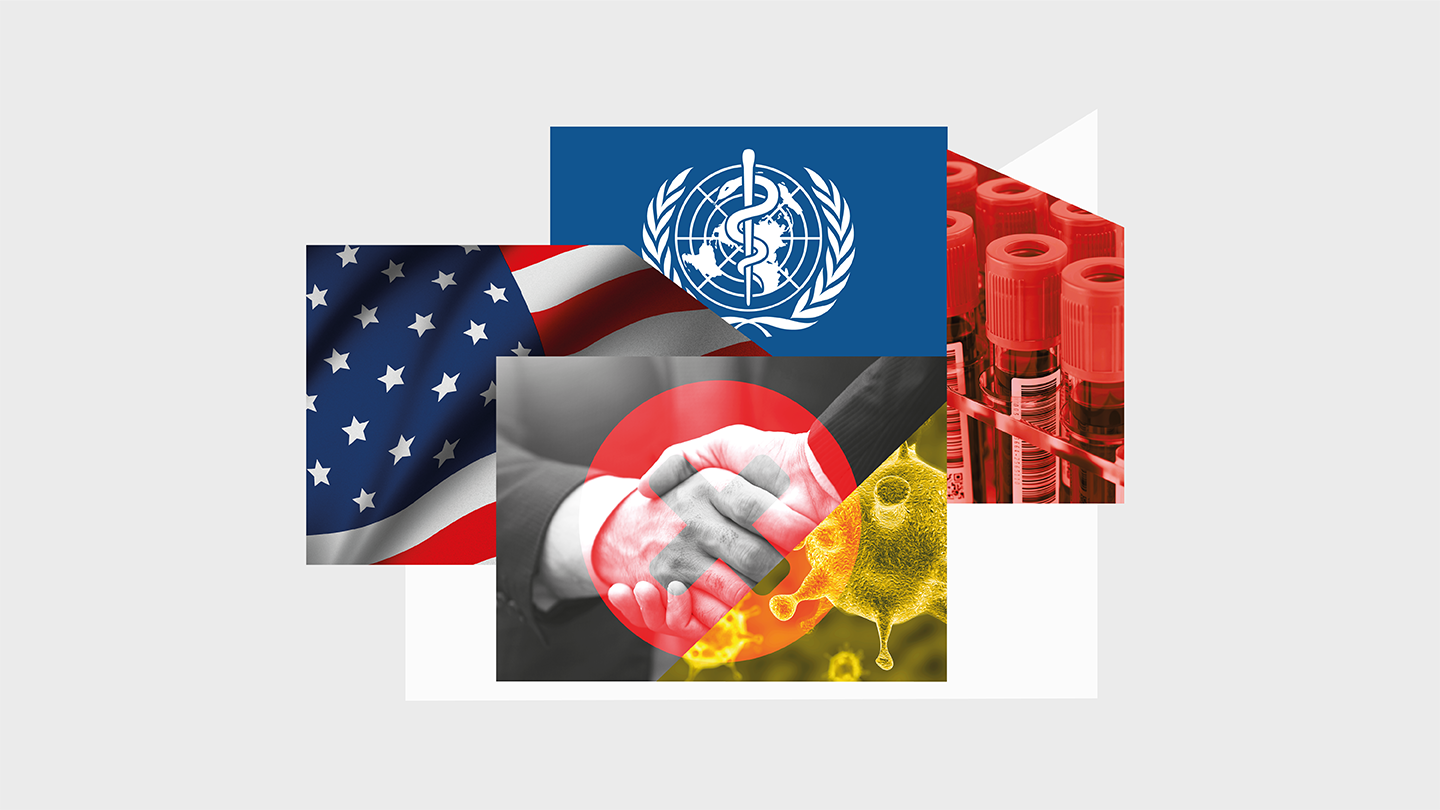
President Trump’s decision to withdraw the US from the World Health Organization (WHO) is one of multiple orders that are guaranteed to affect healthcare services across the globe. Here, Ran Frenkel, CEO of Polaroid Therapeutics (PTx), joins us to discuss what this decision could mean for global health efforts.
How do you perceive the impact of the US withdrawal from the WHO on global infectious disease surveillance and response?
The WHO’s antimicrobial resistance (AMR) surveillance network isn’t just bureaucracy, it is the oxygen fueling antibiotic research and development (R&D). I’ll be blunt: the US withdrawal threatens to dismantle decades of carefully constructed global health infrastructure. It is as if someone has abruptly pulled the EKG monitor mid-surgery.
Just last year, the International Pathogen Surveillance Network (IPSN) detected a dangerous beta-lactam resistant Pseudomonas mutation in Mumbai before it could spread globally. This real-time detection saved countless lives and preserved our therapeutic options. Without WHO’s vigilant radar, we are forced to navigate a high-stakes environment blindfolded. Resistant pathogens don’t adhere to borders or wait for permits, they hitchhike on cargo ships and tourist flights – turning our interconnected world into a veritable minefield of emerging threats.
The US has long been the financial and technical lifeblood of these global initiatives, and its sudden departure leaves the WHO scrambling to secure alternative resources. A scramble that could very well destabilize the wider system. This is not a bureaucratic hiccup. It is a seismic shift that risks fracturing our collective ability to detect, respond to, and innovate against emerging pathogens, leaving us perilously exposed in an unpredictable world.
The WHO executive board now faces a stark reality: we must fundamentally reimagine how we fund and operate global health surveillance. The era of single-donor dependence must end, replaced by a more resilient, diversified funding model that ensures continuous monitoring of emergent threats.
Do you foresee any disruptions in international collaboration for AMR diagnostic innovation and implementation due to this policy shift?
I see this policy shift as a knock to the spirit of scientific progress. Political walls don’t just slow science, they can limit innovation precisely when we need it most. During the COVID-19 crisis, we witnessed how unfettered global collaboration tore down barriers and accelerated breakthroughs like mRNA vaccines. When researchers shared viral genome data in real-time, we developed vaccines in real-time. Another example is the Joint Programming Initiative on Antimicrobial Resistance (JPIAMR) which has proven that cross-border partnerships and shared data are critical to overcoming challenges that no single nation can tackle alone.
We’re seeing similar dynamics with AMR. At PTx, our recent breakthrough in treating multidrug-resistant infections came through collaboration with leading research institutes and passionate scientists around the world. Ultimately our platform depends on these deep, collaborative relationships. This isn’t abstract theory, it’s how we develop therapies that save lives.
The US withdrawal threatens this ecosystem of innovation. Without structured international collaboration, we risk missing critical patterns in resistance development that could inform next-generation therapeutics. In wound care especially, where bacterial resistance patterns vary significantly by region, this fragmentation could severely impact our ability to develop effective treatments. When countries hide behind political barriers, they not only slow progress but also break the very network of innovation that keeps us ahead of deadly diseases and superbugs.
Do you anticipate regulatory or funding challenges for companies that develop rapid diagnostics for infectious diseases?
Regulatory fragmentation is already slowing our fight against AMR. When diagnostic and surveillance standards differ between regions, it creates costly barriers for therapeutic development. In our field, we recognize that funding and regulation play very different, but intertwined, roles. Adequate funding is essential for developing innovative diagnostic tools and generating the robust data that regulatory bodies need to perform thorough risk-to-benefit assessments. When funding is compromised, the evidence package becomes insufficient, leading to delays in regulatory approval and stalling potential solutions for health threats. Still, without proper financial backing to support rigorous data collection, even the most promising breakthroughs may never reach the clinic.
Harmonization isn’t idealism – it is a necessity for addressing global health threats efficiently. The key is aligning standards for measuring treatment efficacy while maintaining rigorous safety protocols. This balance ensures both innovation and patient safety.
What about low- and middle-income countries – how do you expect this decision to impact access to diagnostics and AMR surveillance tools in these regions?
I am deeply concerned about the potential impact of this decision on low- and middle-income countries, who are already struggling to navigate challenging circumstances with limited resources. With diminished international support, the disparity between resource-rich and resource-poor areas will only widen. This growing disparity will leave the most vulnerable populations to bear the brunt of infectious diseases and chronic conditions.
These nations inevitably suffer more when crises strike – facing compounded impacts from inadequate healthcare infrastructure, insufficient vaccination programs, and limited access to life-saving treatments. The chronic wound burden in these regions is particularly concerning, as it intersects with multiple healthcare challenges.
The world must pay special attention to these communities – isolating them or withholding resources is not an option. It is our collective responsibility to ensure that no country is left to fight these battles alone. In protecting them, we safeguard global health and uphold our shared humanity.
Could this withdrawal lead to fragmentation in diagnostic standards and hinder the development of unified AMR testing strategies?
Absolutely. Any major country's withdrawal threatens the unified approach that has been our most effective defense against AMR. Without shared standards, we risk creating dangerous gaps in our global health surveillance and developing a fragmented network of disconnected systems. In therapeutic development, consistent global standards for measuring antimicrobial efficacy are crucial. These standards determine how we evaluate new treatments and track emerging resistance patterns.
Global surveillance is not a local concern – it serves as our collective safety net. Harmonizing diagnostic standards is crucial, particularly for global challenges, as a seamless and united approach is the only way to detect emerging threats before they escalate. When political decisions fragment these standards, we not only create bureaucratic complications but also undermine the very foundation that allows us to comprehensively view the situation, effectively track resistance patterns, and mount coordinated and timely responses. This strategic vulnerability poses a significant risk to human lives.
Beyond AMR, what broader implications do you see for diagnostic innovation, particularly for emerging infectious diseases, if the US distances itself from WHO-coordinated global health programs?
This is a dangerous move toward scientific isolation, which threatens innovation at its core. When we close off channels for international collaboration, we narrow the field of inquiry and, in doing so, limit our ability to make breakthrough discoveries.
Innovation thrives when researchers from different cultures, disciplines, and backgrounds share insights; a researcher in Mumbai might notice a pattern that transforms our understanding of resistance mechanisms in chronic wounds. Diverse perspectives are the engine that drives fresh ideas and solutions.
The HIV/AIDS crisis proved this point powerfully. Early treatment breakthroughs came from combining insights across continents: African healthcare workers identifying unique presentation patterns, European researchers developing novel testing approaches, and US labs synthesizing these insights into effective therapies. This milestone was achieved only because of robust international cooperation, where global data and ideas flowed freely across borders.
By retreating from global collaboration, we risk stifling the creative cross-pollination essential to tackling emerging infectious diseases. In a world where pathogens respect no boundaries, the free exchange of scientific thought isn’t just beneficial, it is absolutely critical for our collective health.
Looking forward, what steps should the diagnostic and pharmaceutical industries take to mitigate potential disruptions caused by the US withdrawal from the WHO?
Our industry must step up as both innovators and bridge-builders to counter these disruptions. We must treat this moment as a call for proactive, cross-border collaboration – a rallying cry for harmonized regulatory frameworks, shared data platforms, and strategic public-private partnerships. Beyond advocating for unified standards, additional mitigation strategies could include establishing rapid-response consortia that pool expertise and resources, creating contingency funding pools to address emerging threats swiftly, and fostering technology transfer initiatives that accelerate innovation in regions most in need.
By reimagining competition as a collective effort to safeguard global health, we reiterate our commitment to addressing unmet health needs and ensuring that progress in therapeutic development continues uninterrupted. Protecting lives and fostering a healthier, more equitable world are not just strategic necessities but ethical obligations.
The private sector can’t replace WHO’s coordinating role, but we can build resilient networks that transcend political boundaries.




